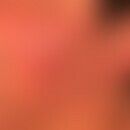Synonym(s)
DefinitionThis section has been translated automatically.
Stage I rosacea with transient, seizure-like facial redness (flushing) and swelling that can be triggered by numerous stimuli.
Occurrence/EpidemiologyThis section has been translated automatically.
w>m (?); familial clustering. Caucasian skin is considered a disposition factor. A prevalence of 22% was reported in a population of working people > 30 years. Rosacea would therefore be the most common skin disease (see below rosacea - overview).
You might also be interested in
EtiopathogenesisThis section has been translated automatically.
Not fully elucidated.
Genetic dispositions with abnormalities in innate immunity (these involve the antimicrobial peptide cathelicidin and its activator kallikrein 5), concomitant vascular dysfunction is considered the most likely cause. This recruits a vicious circle of dermal damage, vasodilatation, vascular damage, and inflammatory tissue reaction.
Trigger factors are UV-rays, X-rays, heat, cold, excitation, coffee, alcohol, tea, hot spices (pepper, curry), temperature fluctuations, external (too fatty) cosmetics and hormonal fluctuations (menstruation, pregnancy, menopause). Controversially, the influence of Helicobacter pylori is discussed.
ManifestationThis section has been translated automatically.
Mostly between the ages of 30 and 60; usually increases with age.
LocalizationThis section has been translated automatically.
face, cheeks, nose, forehead, chin, lateral neck areas
ClinicThis section has been translated automatically.
Precursor form (transient erythema): First signs of incipient rosacea with a tendency to flush-like, functional erythema, which is noticeable as fleeting, pale red or bright red patches on the face. They disappear completely in the initial stage of rosacea. Recurrence with stimuli such as: change from cold to heat, spicy food, hot drinks such as tea or coffee, alcohol, stressful situations. These flush symptoms are accompanied by heat waves, sometimes also an increased tendency to sweat, which is perceived as uncomfortable by those affected.
Over the course of months/years, the redness persists for hours and days, later permanently. Patients also complain of paroxysmal and intermittent blood filling of the affected areas. The affected skin becomes increasingly firm due to persistent sulfurous edema (+ slight dermal fibrosis) (an extensive erythema develops into a red induration). There is a tendency to develop telangiectasias (rosacea teleangiectatica), which are mainly localized nasolabially and in the cheek area.
Fig. see below. Rosacea
TherapyThis section has been translated automatically.
S.u. rosacea
External therapyThis section has been translated automatically.
Brimonidine (prep. Mirvaso®) can be recommended for the treatment of erythematous rosacea. In clinical trials, brimonidine gel had significantly greater improvements in rosacea facial erythema than placebo. Brimovudine is a very effective therapy for rosacea facial erythema. The drug acts via reversible (!) vasoconstriction over a 12-hour period. The onset of action is often detectable after 30 minutes. Experience has shown that the success of treatment improves with increasing treatment duration. The most common side effects (incidence ≥ 1%) during short-term treatment were flushing, erythema, burning of the skin, and contact dermatitis.
Most common side effects during long-term use (incidence: ≥4%) were: flushing (10%), redness (8%), worsening of rosacea (5%), nasopharyngitis (5%), burning of the skin (4%), increased intraocular pressure (4%), and headache (4%).
The gel is applied daily in approximately pea-sized amounts to the affected areas. The effect is expected within a 30-minute period.
Radiation therapyThis section has been translated automatically.
Diet/life habitsThis section has been translated automatically.
S.u. rosacea
Note(s)This section has been translated automatically.
The maximum variant of erythematous rosacea is called rosacea edematosa or M. Morbihan.
LiteratureThis section has been translated automatically.
- Del Rosso JQ et al (2013) Management of facial erythema of rosacea: what is the role of topical α-adrenergic receptor agonist therapy J Am Acad Dermatol 69 (Suppl 1): S44-56
- Lim HS et al (2014) The efficacy of intense pulsed light for treating erythematotelangiectatic rosacea is related to severity and age. Ann Dermatol 26:491-495
- Piwnica D et al (2014) Vasoconstriction and anti-inflammatory properties of the selective α-adrenergic receptor agonist brimonidine. J Dermatol Sci 75:49-54
- Urban J et al (2014) Optical coherence tomography imaging of erythematotelangiectatic rosacea during treatment with brimonidine topical gel 0.33%: a potential method for treatment outcome assessment. J Drugs Dermatol 13:821-826
Outgoing links (9)
Brimonidine; Cathelicidins; Immunity, innate; Kallikrein; Laser; Morbus Morbihan ; Prevalence; Rosacea; Teleangiectasia;Disclaimer
Please ask your physician for a reliable diagnosis. This website is only meant as a reference.











